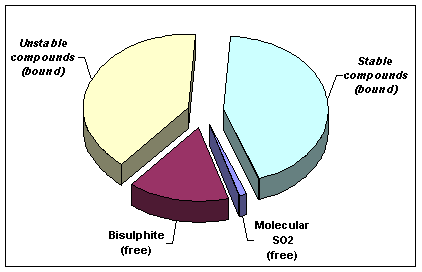

Maintenance and calibration are necessary for reliable use.
How to calculate ppm winemaking portable#
A couple of manufacturers combine the carbon dioxide and oxygen sensors into one portable meter. Manufacturers of the later type include Bacharach, Chart Industries, CO2 Meter, PCE Instruments, and RAE Systems. However, it is recommended that a CO2 meter be obtained with a higher range. If you declare your "action level" at a value below this upper range, then one of these meters may be suitable. Most of the available CO2 meters have a range up to 5000 or 10,000 ppm. These meters are available from both beverage industry and safety equipment suppliers. Importantly, CO2 levels also need to be checked to verify safe levels for worker tasks during fermentation and both CO2 and O2 checked prior to confined space entry. A CO2 meter may be used to check the progress of fermentation and an O2 meter to verify the proper atmosphere when inerting tank headspaces with argon or nitrogen. About CO2 and O2 Meters A meter that measures air levels of carbon dioxide (CO2) and oxygen (O2) is a necessary tool for any winery. A poorly ventilated room or building can have carbon dioxide levels build up to exceed 40,000 ppm (4%), the NIOSH immediately dangerous to life and health (IDLH) value. Additionally those who work at night with the building closed up or who open the next morning may be exposed to even greater levels of carbon dioxide.
How to calculate ppm winemaking full#
Tanks or even open top Macro Bins partially full of fermenting grapes can have headspaces with toxic carbon dioxide levels and oxygen deficiency. Workers whose tasks require them to be over open bins or tanks undergoing fermentation can expect a higher exposure. Pumping over wine or "punching" the cap (skins, seeds, stems, and pulp that have floated to the top) can release additional carbon dioxide in the immediate area as well as contribute to the buildup. Whether a hazardous buildup occurs is dependent on the amount of grapes fermenting, room size, and natural and mechanical ventilation available in the rooms and building. The venting of carbon dioxide from tanks or open top fermentation bins can result in the spread of the gas into all work areas to which it is able to diffuse or travel. Regulatory agencies may use the 40,000 ppm value as a maximum limit for any unprotected exposure. Exposure to 70,000 ppm (7%) would be more immediately dangerous in that unconsciousness can occur within a few minutes. This value was established for the proper selection of respiratory protection equipment and to prevent a worker from being unable to self-escape or suffering irreversible harm after 30 minutes of exposure at the IDLH level. The immediately dangerous to life and health (IDLH) value as recommended by the National Institute for Occupational Safety and Health (NIOSH) is 40,000 ppm (4%). The State of Washington exposure limits for carbon dioxide are 5000 ppm as averaged over an eight hour work shift (TWA8) and 30,000 ppm as a short term exposure limit averaged over any 15 minute work period (STEL15). Along with air tests and exposure monitoring, the limits may be used to identify needed controls or determine the effectiveness of existing controls. Higher levels of carbon dioxide can result in more serious and immediate effects including coma, asphyxia, convulsions, unconsciousness, and death.Ĭarbon dioxide has several occupational exposure limits set to help prevent harmful exposure. The number and severity of symptoms may vary between individuals. Excessive carbon dioxide in the air can cause headache, sweating, rapid breathing, increased heartbeat, shortness of breath, and dizziness. Possible Hazards: Release of Carbon Dioxide (CO2) into Work Areasįermentation produces carbon dioxide gas – about 40 times the volume of grape juice. Fermentation is commonly carried out in tanks, Macro Bins, or barrels. Fermentation is generally considered 'complete' when all of the sugars have been converted into ethanol. Fermentation converts the sugars in grape juice into ethanol, with carbon dioxide and heat also being produced in the process. Selected wine yeasts may be added to the must by the winemaker, after which fermentation may take up to 10+ days to complete, depending on the grapes, the temperature of the must, and/or the wine style desired. Fermentation is the process of converting grape juice into wine with the addition of yeast.


 0 kommentar(er)
0 kommentar(er)
